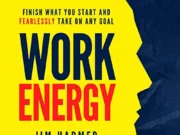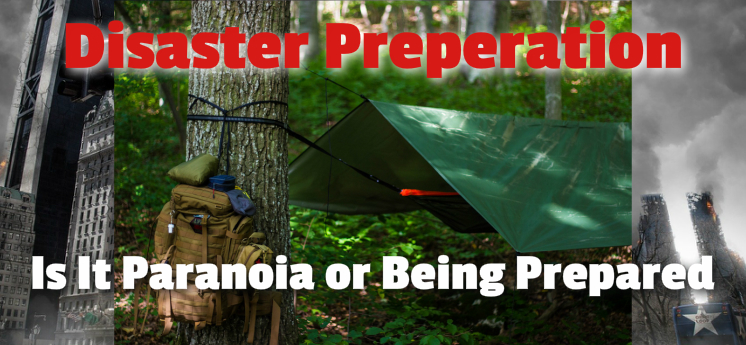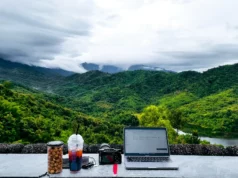If you’ve been watching the news of late you’ll know that there have been and are a few natural diasters going on around the world.
The wild fires in California
The bush fires in Australia
The flooding in the north of England
And throughout this year there have been other across the globe that have taken lives and ruined scores of others.
Then there’s the man made disasters, just look what’s happening in Hong Kong right now with the anti government protesters rioting in the street, which seems to have spilled out onto the streets of London as well, when protesters attacked Hong Kong’s justice secratery and the ever present threats from terrorism.
No wonder there’s been a up surge in interest for information about survivalism and disaster prepping.

But is this just paranoia or sensible preperation to cover yourself just in case mother nature or un civilised society tries to screw you over?

Of course it depends on who you speak to. There are guys who’ve never heard a conspiracy theory they didn’t believe and have prepped there asses off with kit and training to rival the best special forces teams. Then there are those who take an interest in what’s happening around the world and are wondering if there’s anything they should be doing “just in case,” and then there’s the blissfully unaware who have no clue and are just not interested.
Most of us probebly sit somewhere in the “interested in what’s happening” camp.
So, what should you do? Well a little bit of CYA (Cover Your Ass) is sensible, so you might want to get yourself a bug out bag. For most people this is not paranoia it’s a sensible precaution just in case you are forced from your home when an emergency hits like, the afore mentioned fires, gas leaks, floods, terrorists etc
Having said that unless you really have to you should stay in doors. Leaving your home means you’re leaving food, water, shelter and protection behind. So unless you’re told otherwise or it becomes impossible to stay, you should stay put.
In recent months though, we’ve seen several scenarios in which having a go bag would be tremendously helpful. The wildfires in California are notoriously unpredictable, and some homeowners find themselves with only minutes to prepare to evacuate. Those in hurricane-prone parts of the country have become accustomed to paying attention to the latest forecasts and having to alter their plans dramatically at a moment’s notice. Tthe United States has been lucky in terms of major earthquakes, but it’s just a matter of time before some of the largest metropolitan areas experience the proverbial Big One. Having a bug out bag saves precious time spent for preparation, giving you an edge when it comes to evacuating and surviving.

What’s in Your Bug Out Bag?
No two bug out bags are exactly the same, and you might end up spending more time planning your bag than you spend filling it up. Still, some commonsense components include:
- Water, generally one gallon per person per day
- Water purification supplies for extended emergencies
- Non-perishable food and cooking supplies
- First aid supplies, including crucial medication
- Emergency blankets or sleeping bags depending on the climate in your area
- Physical maps and a compass for navigation in blackouts
- Crank-operated radio for updates about nearby conditions
- Duct tape, for its magical properties and endless versatility
- Survival tools: Survival knife, multitool
- Fire starting kit
Essentially you need to have equipment in you bag that can get you water and food, build you a fire and shelter.
Take note of your local conditions. Those in Florida probably don’t need to worry about heavy-duty clothing, and those in hot, arid regions might need to pack extra water. You’ll also want to determine how long you want your bag to last. Most men lean towards extended supplies, but saving on weight can be valuable as well. Still, you can shed supplies in an emergency if needed.
Self-Reliance
you don’t have to be a card-carrying Libertarian to appreciate the value of self-reliance. Our ancestors lived nomadic lifestyles, carrying with them the supplies they needed to survive in changing environments and living off the land. No matter how cozy our day-to-day lives might seem, we’re only a disaster away from being left alone to survive, and history is ripe with examples of people being forced into the wild without warning.
Another case for having a bug out bag is simply the cost-benefit analysis: Even if you think it’s highly unlikely you’ll ever need one, the cost and time involved in setting one up is relatively small. Think of a go bag as a type of insurance. Hopefully, you’ll never need one. But if you do, you’ll be thankful you were prepared.
Those who write about bug out bags can seem a bit extreme at times, to say the least. If you’re worried about the stigma, perhaps consider a slight rebranding: Nobody will raise their eyebrows if you have an “emergency preparation kit.” Regardless, there is a real, if small, chance that preparing a basic go bag can be the difference between you and your family making it through a disaster and struggling to survive.
And to start you off grab a FREE Everstryke match, just click the image below.








































